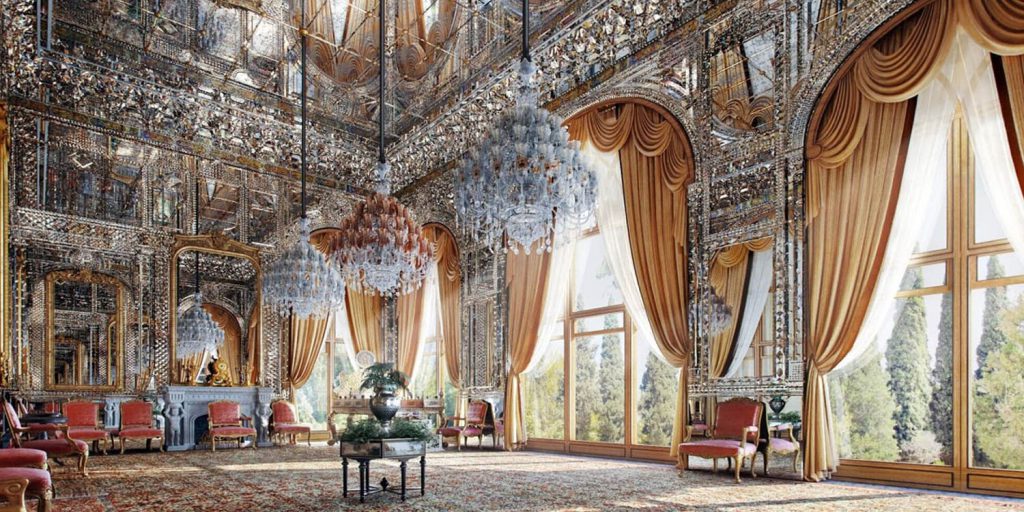
Menu

The Golestan Museum Palace, with a history of over 440 years, is one of Iran’s unique historical collections.
The name of Golestân at this complex is rooted in the foundation of a hall called “Golestân”, which was one of the buildings of the era of Agha Mohammad Khan Qadjar and was completed in 1801 during the reign of Fath Ali Shah Qadjar. The Golestan Palace has undergone changes from the Safavid era to the contemporary era.

Construction of the area we now know as the Golestan Palace began during the time of Karim Khan Zand and took place between 1759 and 1766.
During the reign of Nasser al-Din Shah Qajar who was crowned in 1848, Golestan Palace underwent fundamental changes during his reign (nearly 49 years) and his visit to Europe as the first king of Iran on its three voyages in 1873, 1878 and 1888 AH and received many European influences.
The royal citadel in the years following the extinction of the Qajar dynasty and the coming to power of the Pahlavi dynasty saw the coronation of the first Pahlavi (May 4, 1305 AH) and the second Pahlavi (November 25, 1346 AH) and also this complex since then Has made changes.
Main office: Office no. 5, First Floor,Building No. 404, Corner of Beheshti St. and Qaem Maqam St. Tehran Iran.
Tel : +985138519585 EXT. 117
WhatsApp : +968 912 14 982
Email : info@persiantoursgroup.com